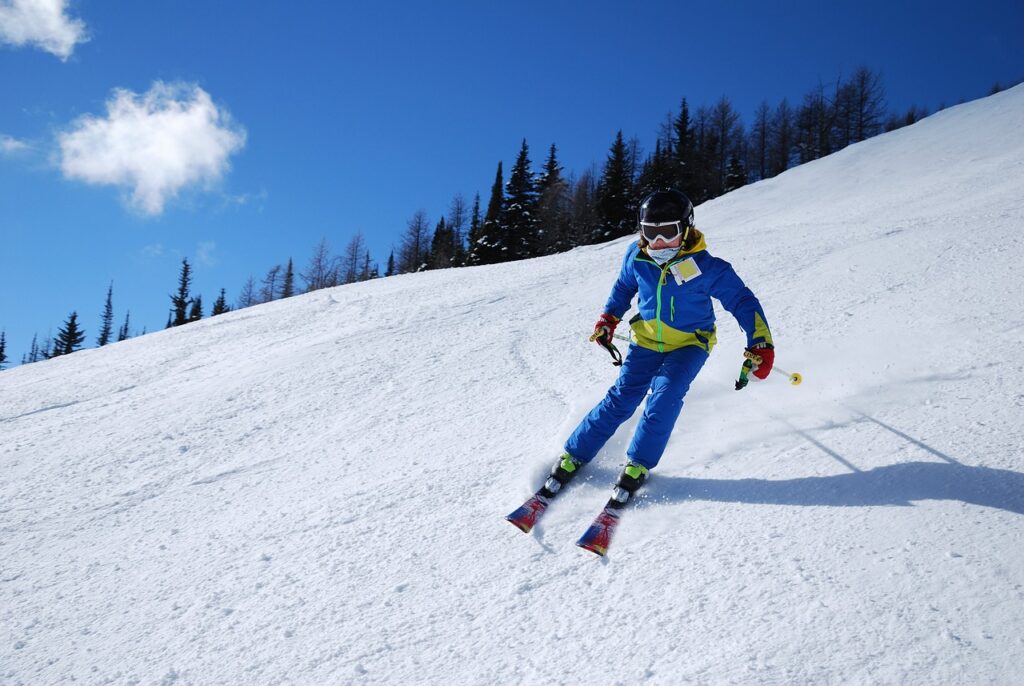Winter sports enthusiasts often find themselves faced with a choice between two distinct styles: Alpine vs Nordic Skiing. Let’s delve into the key differences between these two popular winter activities.
Alpine vs Nordic Skiing: The Essence of Alpine Skiing
Alpine skiing is synonymous with the thrill of downhill descents. Skiers navigate steep slopes, relying on gravity for an adrenaline-pumping ride. The equipment for alpine skiing includes shorter, wider skis and rigid boots, providing stability during high-speed descents.
Mastering the Mountains – Alpine Style
Alpine skiers conquer challenging terrains, favoring steep slopes and groomed trails. The thrill lies in the speed and technique required to navigate downhill. Sharp turns and controlled descents characterize this style, demanding a specific skill set and a taste for the thrill of the mountains.

Alpine vs Nordic Skiing: Nordic Skiing Unveiled
In contrast, nordic skiing encompasses a broader spectrum, primarily known for its cross-country nature. Skiers traverse flat or gently rolling terrains for extended distances. Nordic skiing involves longer, thinner skis and flexible boots, allowing for a more natural walking motion.
Endurance and Tranquility – Nordic Skiing’s Charms
Nordic skiing offers a different experience, emphasizing endurance and tranquility. Enthusiasts appreciate the serene landscapes as they glide across snowy fields and through wooded trails. The rhythmic, steady pace of cross-country skiing provides a unique sense of peace and a full-body workout.

Equipment and Technique – Contrasts and Comparisons
The equipment used in alpine and nordic skiing is notably different. Alpine skis are shorter and stiffer, providing stability during descents, while nordic skis are longer and more flexible, suited for the lateral movements of cross-country skiing.
Technique-wise, alpine skiing focuses on quick turns and controlled descents. Nordic skiers employ a more straightforward, forward-motion technique, relying on endurance and efficient use of energy for extended journeys.
Accessibility and Popular Appeal
Both alpine and nordic skiing cater to a range of skill levels. Alpine skiing tends to attract thrill-seekers and those who enjoy the challenge of conquering steep slopes. Nordic skiing, on the other hand, is accessible to a broader audience, appealing to those who appreciate the tranquility of nature and a more prolonged, steady-paced workout.
In terms of popularity, alpine skiing often dominates in mountainous regions with abundant downhill slopes, while nordic skiing finds favor in flatter terrains and regions with vast snowy landscapes.

Alpine vs Nordic Skiing: Making Your Choice on the Slopes
When deciding between alpine and nordic skiing, it boils down to personal preference. Consider your thrill threshold, terrain preference, and the type of experience you seek on the slopes. Whether it’s the adrenaline rush of alpine skiing or the peaceful endurance of nordic skiing, both offer unique and enjoyable winter experiences.
In conclusion, the choice between “alpine vs nordic skiing” ultimately depends on your individual preferences and what you seek in a day on the slopes. Enjoy the winter wonderland, whichever style you choose!
